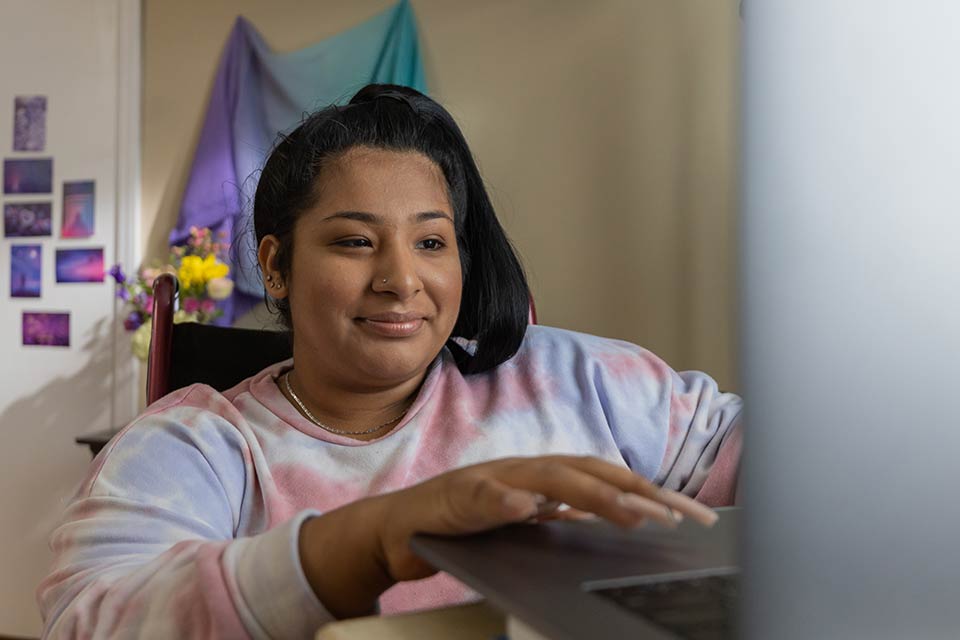At Shriners Children's Philadelphia, Occupational Therapists Make a Difference Every Day in the Lives of Their Patients

Shriners Children's Philadelphia occupational therapy team
April is Occupational Therapy Month, and Shriners Children’s Philadelphia is celebrating the contributions the dedicated team of occupational therapists makes to the rehabilitation department and overall patient care.
While many people may be unfamiliar with the specific role of occupational therapy (OT), the OT team at Shriners Children’s Philadelphia plays an instrumental and multidimensional role in the care and rehabilitation of the children. “As occupational therapists, we like to use the term ‘occupation’ in a way that describes how a patient occupies their time,” said senior occupational therapist Justine LaPierre. “That can range from taking notes in class, to applying makeup, to playing a sport.”
Just as adults identify with their daily activities, so do adolescents and children.
“Occupational therapists fundamentally believe that our daily activities define who we are as people,” said occupational therapist Jaclyn Miley. “If we aren’t able to perform such activities, we could feel a loss of self and dysfunction.”
These common “occupations” for a child can include eating, getting dressed, grooming and, most importantly, playing. At Shriners Children’s Philadelphia, occupational therapists collaborate with patients and families to figure out a way to enable patients to engage in these activities. This may be through building skills, using special tools, or adapting the task.
“Where there is a will, there is a way,” said Miley.
Occupational therapy sessions vary from patient to patient depending on that individual’s goals. Despite different goals, each patient will spend time with an occupational therapist, participating in activities designed to help them reach their individual goals.
“We have a really unique vantage point at Shriners Children’s Philadelphia,” said LaPierre. “We aren’t limited to one specialty – we see it all. We’re specialists in analyzing activities, able to ascertain how both small components and larger contexts can affect a child’s participation. We aim to help the children at Shriners Children’s live their lives to the fullest.”
In addition to spending time with a patient during treatment sessions, our occupational therapists’ roles can range from performing bath equipment evaluations, creating adaptations for bicycle riding or musical instrument participation, as well as assessing for a range of adaptive equipment to assist in daily tasks, such as feeding, dressing and grooming.
Occupational therapists can also be found around the hospital in many settings. They help patients in the inpatient rehabilitation unit progress their independence and safety for a successful transition home after injury or complex surgery. They work closely with the hand surgeons in the clinic and in the outpatient rehabilitation department. Before surgery, therapists often complete in-depth evaluations in order to educate patients and families. After surgery, they fabricate custom orthoses and implement treatment sessions that are designed to assist patients in achieving their ultimate goals.
Patients often receive homework from their therapists and they are able to translate the progress they make during therapy into other contexts, like their home and school environments. Because the programs are custom-tailored to a child’s personal goals, they often think their treatment sessions and homework are fun!
“When you watch a child engaging in their choice occupations – self-feeding for the first time, swimming with adaptive equipment, playing without a perceived limitation – you see the importance and purpose of occupational therapy,” said Miley.
Keep In Touch
Join our mailing list to stay up to date on everything that's happening at Shriners Children's.



